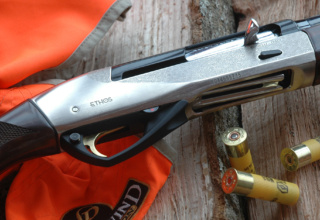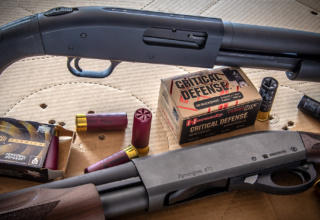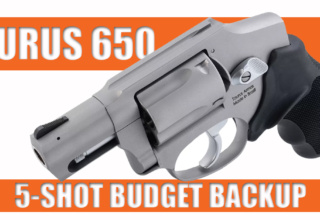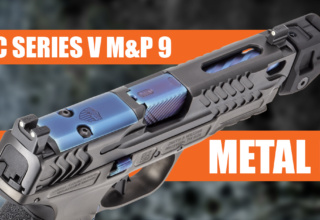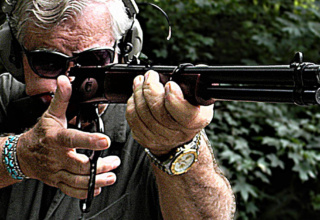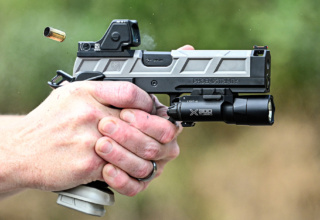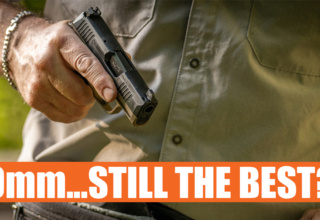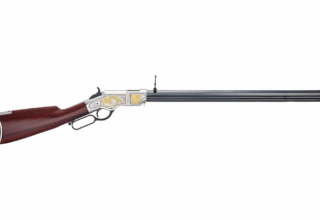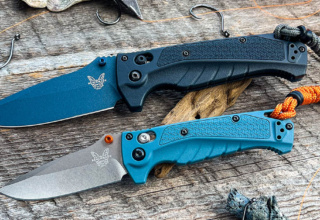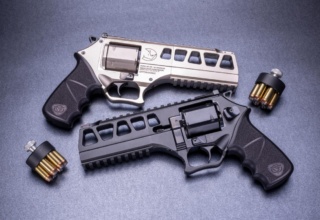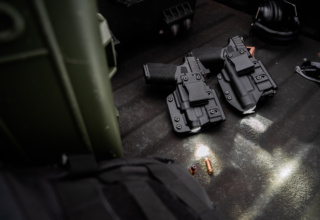The defensive shotgun is a force to be reckoned with, but familiarity of operation, careful equipment considerations, training, and practice are essential to make it work in your favor
by Bob Campbell
There seems to be no middle ground regarding the defensive shotgun. Folks either practice hard and use the best equipment or they get by with the least amount of practice and gear they can. Even for those with a busy lifestyle, the shotgun is a good choice if you can put some training into the system. A good quality shotgun is handled largely by feel and must fit the shoulder well and swing quickly. In comparison, a rifle must be aimed carefully. That’s not to say a shotgun doesn’t demand deliberate aiming, but you get the idea.
You must first decide what the shotgun will be used for. Hunting, competition, and personal defense are all roles the shotgun may excel in. The choice of the shotgun isn’t quite as important as the training behind it.
There are those who may state that a shotgun isn’t worth spit for home defense if it doesn’t have an extended magazine, combat light, red dot or laser, and an AR-type stock and pistol grip. Maybe it fits their personal style. Just the same, in my many years of public service, every single incident in which a homeowner defended the home against invaders with a shotgun, the piece was an ordinary field-grade gun. Remington 1100s and Browning A5s were commonly used. In one case, though, a single-shot .410 did excellent work in the hands of a teenager — at nine feet distance. A Browning A5 slug gun loaded with buckshot dispatched three members of a murderous gang in an outside-the-home gun battle.

I would recommend an 18- or 20-inch barrel for rapid deployment in the home. A standard shotgun stock allows maximizing the shotgun’s sometimes amazing ability to swing quickly and track targets. After all, you DO have to aim the shotgun at short range. Centering the load means everything. If all you have is your sporting gun, practice and make allowances in training.
The shotgun is our most formidable defensive long gun based on two major advantages. The shotgun handles quickly with a natural point and rapid swing. The second advantage is the payload. Nothing capable of being fired from a shoulder is more effective at close range.
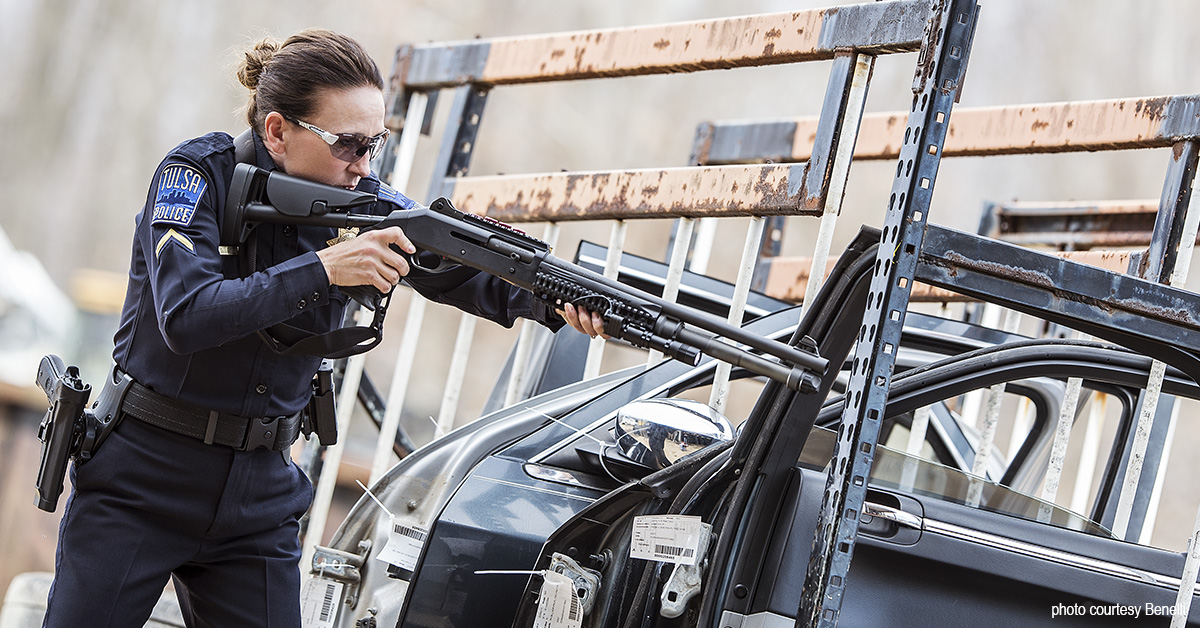
As an example, I recently watched a video in which a wildlife officer tracked down a crocodile that had killed a village woman in Asia. They found the animal and the croc approached the boat quickly. A single shotgun blast at close range and the croc rolled over dead in the water. That is power! Power to stop a fight or dangerous animals and save your life. With that power comes recoil, and there is nothing to do to change the laws of physics. We may, though, re-direct the momentum of recoil. Recoil management is the primary reason the shotgun is underutilized. The popularity of the AR-15 has also led to the deployment of the AR in home defense — along with the 9mm carbine. No real quibble there, but the shotgun remains my go-to for many good reasons.
Three Aces
There are three primary types of shotguns: self-loading semi-auto, pump-action, and break-action. The break-action is the most affordable in single-shot form. Some break-action shotguns are double-barrel types. Whichever type you choose, absolute familiarity with the individual shotgun is demanded.
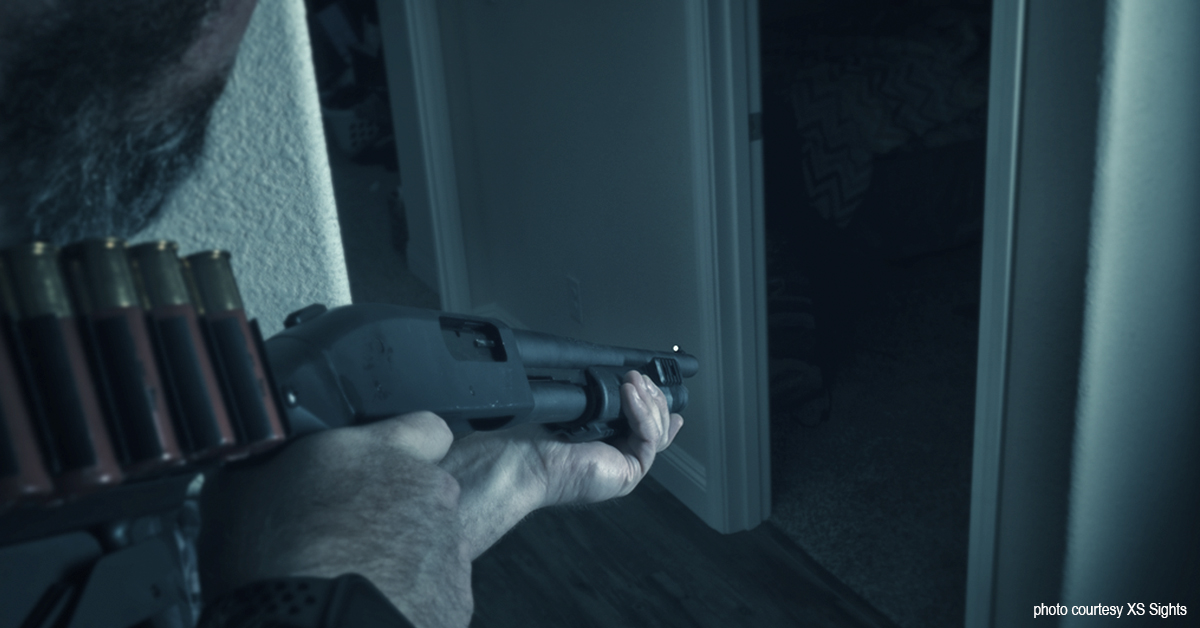
Regarding semi-auto shotguns, the bolt, bolt release, tubular magazine, and safety must be manipulated quickly. You cannot afford a fumble. Most of the practice you undertake may be accomplished through dry fire exercises. But be certain to practice getting the shotgun into action from the ready position. A semi-auto shotgun or a pump-action shotgun should be kept at home, ready, with the chamber empty. It takes only a moment to chamber a shotshell as the shotgun is brought up and to the ready position. A break-action shotgun may be ready with the action open and a shell chambered. Close the action and you are in the game. If you can afford to do so and wish to be all you can be, the Benelli M4 is a peerless combat shotgun. But there are alternatives.
You must learn to load and charge the weapon efficiently and to practice reloading. It isn’t difficult to stay in the fight by quickly thumbing shells into the magazine — something that cannot be done with a detachable magazine shotgun.
I feel that a shotgun with a detachable magazine destroys the balance and easy handling of the shotgun. If you deploy such a shotgun, practice swapping those big, heavy, low-capacity magazines. With tubular magazine shotguns, learn to quickly load and unload the magazine. Load shells into the magazine, pull back the bolt, and shoulder the shotgun.
Don’t unload a shotgun magazine by manipulating the action (running shotshells into and out of the chamber). That’s what shell releases are for. You may even transition to a slug load quickly.

Pump shotguns operate in the same manner. Remington, Benelli, and Mossberg semi-auto shotguns have differing manual of arms. Most semi-autos do not allow loading the magazine unless the action is un-cocked. When using the pump-action shotgun, be certain to operate the action with vigor. Fire, bring the forend to the rear forcefully in recoil, and then move the forend forward in a positive manner in order to load the chamber. Fire, the bolt releases, and you may run the action again.
With the auto-loader, practice pulling the bolt back using the cocking handle. If the action isn’t operated properly, there is a good chance you will have a short cycle. Clearing such a malfunction is difficult without practice.
While four to eight shells in the shotgun should be sufficient for a home defense situation, it is wise to practice speed loading. With the shotgun in the firing position, the support hand quickly grabs a shell from either a receiver-mounted carrier or a belt carrier. You insert this shell into the magazine, topping off the gun load while continuing to cover the threat.

For those experiencing difficulty in this drill or who fumbles and drops shells, the violin-type reload can be helpful. The shotgun is quickly placed on the support side shoulder and the firing hand reloads. While not as quick, this drill seems to help the fumble-prone until a tactical load is mastered. An experienced associate uses the violin drill and no other. Be certain your self-loader allows this type of reload. Some require the bolt to be uncocked to load, which is difficult with a loaded chamber. Some require a release to be pressed to load the magazine.
There are several keys to control the shotgun. First is stance. The stance should begin with the feet about shoulder length apart and weight distribution toward the forward foot. The weak-side foot is forward and supports the greatest portion of the body’s weight. The knee should be bent, but slightly. Leaning into the shotgun helps control recoil. Cheek weld is important with the shotgun as you follow the front sight — bead or post — on the target.
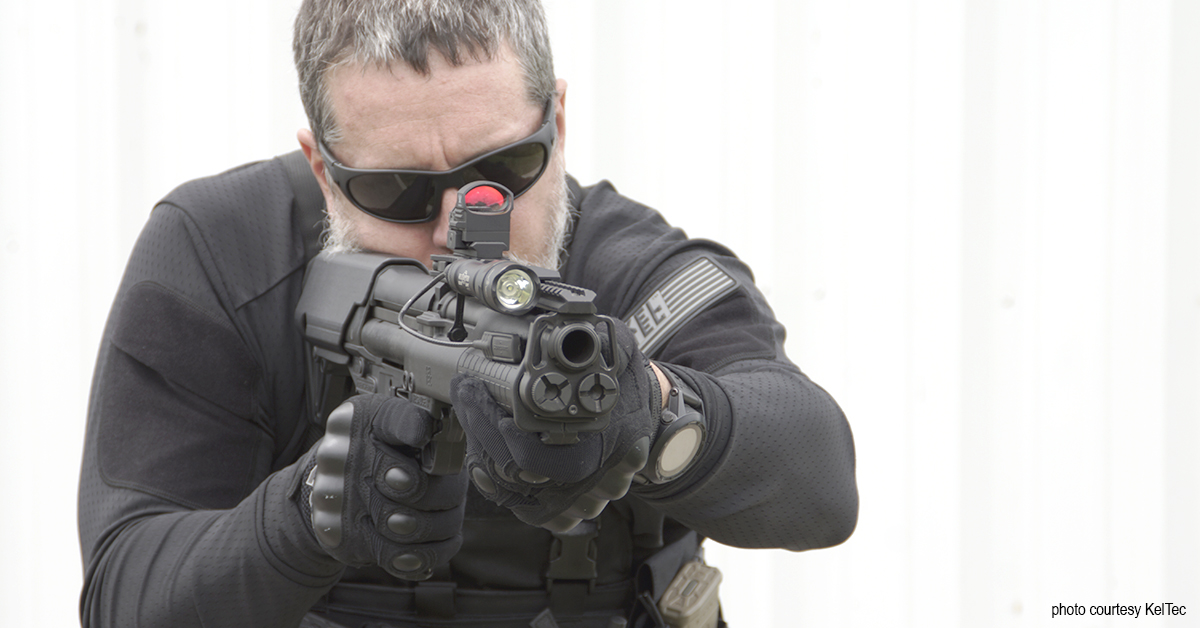
Practice quickly mounting the shotgun. Getting the shotgun into the shoulder and aimed at the threat is vital. It is easy to flub this and that could be deadly.
A 12-gauge shotgun’s recoil is serious but may be controlled with a good firing stance. Don’t bow the head more than is needed. Whatever the action type, maintain a firm grasp on the forend and keep the shotgun pushed into the shoulder. If you don’t keep the shotgun firmly against the shoulder, recoil will be worse. Momentum and motion will strike like a slap!
Aiming
The shotgun pattern must be centered for effect. At home defense range and outdoors to ten yards, the pattern isn’t large enough to afford an advantage against moving targets. Aim carefully. Swing into the target and don’t stop on the target but continue the swing as you fire. If you move the bead and then stop and jerk the trigger, you will miss. Make a smooth, flowing swing and keep the bead on the front edge of a moving target to connect with the full payload.
A shotgun is best utilized for close-range fights of short duration. That is 99-percent of what civilians face. I don’t like the AR- and AK-type shotguns because natural point is lost. Pistol-type shotguns are a terror on the range and practically useless for tactical applications, in my opinion. If you disagree, run a combat course or run such a gun through a 3-gun action course and send us the reel.
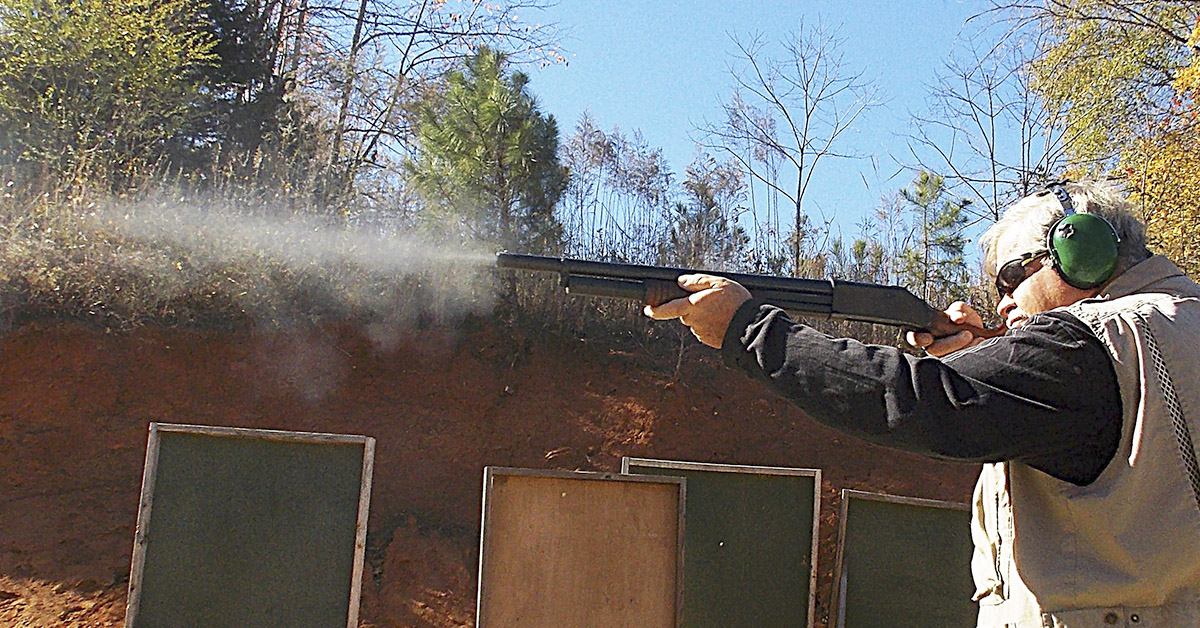
While you may handle many problems with a simple shotgun with a bead front sight — even a break-action type — the pump or semi-auto rules the game in tactical shooting. There isn’t much difference in timed results with a trained shooter. I have qualified the difference between a very good pump-action, the Mossberg 590, and the Remington 11-48 semi-auto. Splits between shots are fast with either gun, the 590 delivering with a .8 average split between shots and the 11-48 .6 seconds. All this with aimed fire.
There are a couple of drills I frequently run. I place two targets at seven yards and rapidly engage each. Fire, swing to the other, fire, and so forth until I have shredded each. I repeat at 10 yards. That is plenty for home defense. I also fire a few rounds at 15 yards. This confirms the pattern and point of aim. I fire twice, load two, and fire again with tubular magazine shotguns. This is an excellent drill to teach speed loads.
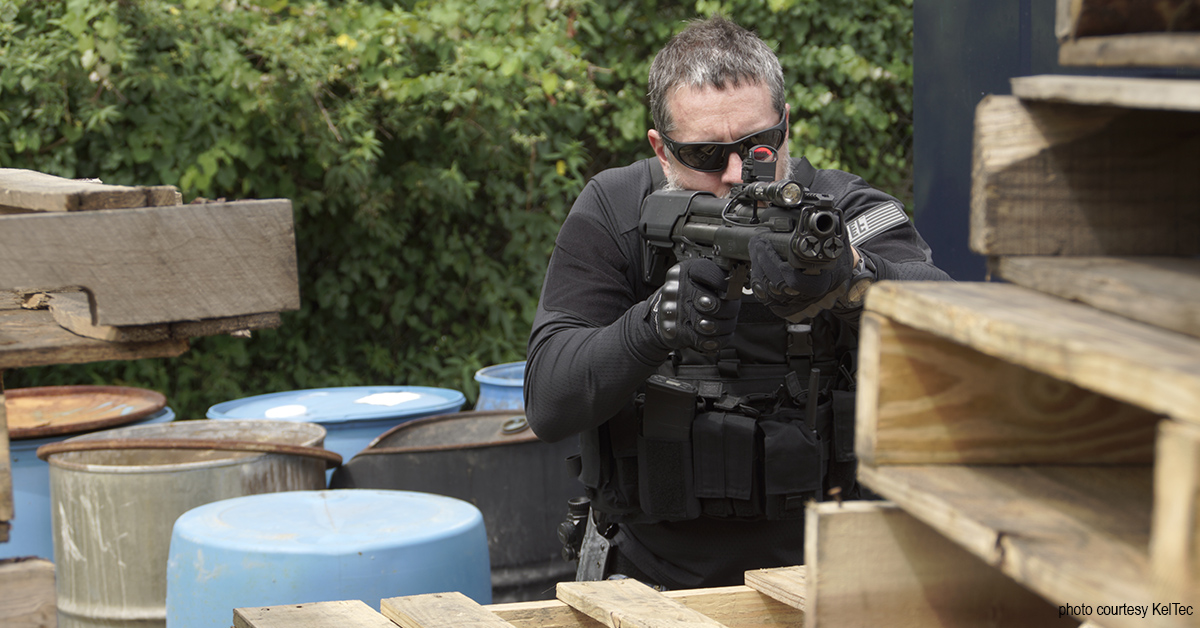
Another important drill is to fire from cover and barricade. If you are not familiar with shotguns and barricade shooting, you may rap your knuckles as you brace the shotgun against the barricade. If a shotgun is used past 15 yards, then you should fire slugs to confirm the point-of-aim and point-of-impact relationship. I like slugs a great deal and consider them a first line of defense against heavy-boned animals of the type likely encountered in the continental states, although grizzly would be a stretch for the strongest slug. But then, I have not shot a grizzly with slugs, so this is conjecture. Most slugs strike slightly above the bead front sight at 7 to 10 yards; some shotguns fire slightly below point-of-aim.
When firing shotguns, a recommendation I make that may be controversial is that I do not like red dot sights and find the ghost ring-type sights superior for most uses. In home defense and most actions to 15 yards, a simple front bead is more than adequate.
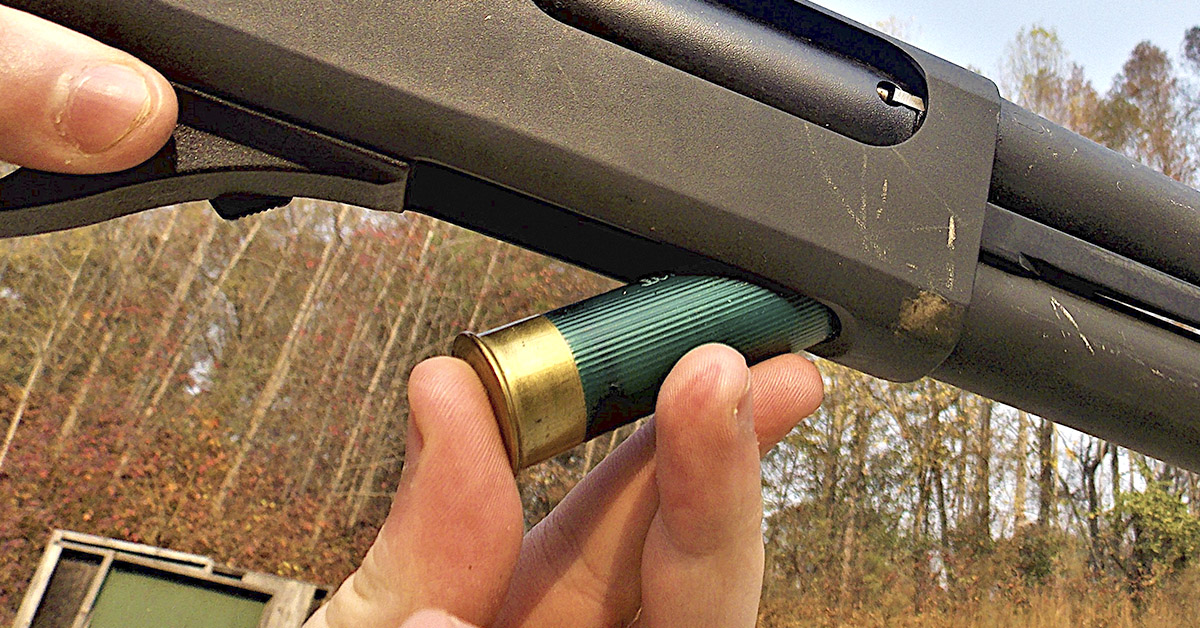
The problem with a red dot is that, in the open port drill, the red dot clogs up access to the chamber. Open port drills are when the last shot is fired and you need to load right now and drop a shell into the chamber. This is usually accomplished by quickly moving the support hand from the forend, accessing a shell, dropping it into the chamber, and then dropping the bolt. This is a simple drill with a semi-auto, as the self-loading shotgun locks open on the last shot. I reach over the top of the receiver with the weak hand to perform this drill. If you have mounted a red dot, reaching over the red dot to load the chamber is a conflict. You will have to tilt the shotgun to one side. If you accept the need to cant the shotgun during the open port drill, there are excellent choices in red dot sights that may serve well. I don’t need one in my personal scenario.

Load Selection
Small shot is intended to cleanly kill a small animal you could hold in your hand. The animal is struck by a few pellets in a cloud of shot. Birdshot will seldom penetrate six inches of gelatin.
The most proven shot is #00 buck. When something has worked so often with one shot to stop a fight, why change? The mini shells popular with fan boys are unreliable and seldom feed reliability even in special-purpose shotguns modified for their use. They castrate the power of the shotgun with a much lower velocity than even low recoil buckshot. Their reliability is unacceptable, with the shells only useful in modified Mossberg pump-action shotguns. Some feature a mixed charge of two shot sizes that result in a huge pattern on a target with no cohesive center. We need a centered hit; we are not looking for a game bird to fly into the target!

I included results from patterning of several 12-gauge shotgun loads. Reduced recoil loads are more than acceptable. Eight-ball buckshot seems to have the advantage in a cohesive, centered pattern. For home defense, I would not shame anyone for using #1 or #4 buckshot, as the wide pattern often has a dense center. The shotgun pattern is an advantage on moving targets but only at 10 yards or more. Beyond 20 yards, range slugs should be used.
Above all practice. The shotgun will be underutilized and marginalized in performance if you do not train.
Shotgun pattern testing with the Savage Renegauge Security shotgun, 12-gauge, ten-yard patterns in inches –
- Winchester #1 (16 pellets, 1220 fps): 9 x 11 in.
- Remington Ultimate Defense #4 (21 pellets, 1177 fps): 10 x 11 in.
- Winchester #4 (27 pellets, 1130 fps): 11 x 13 in.
- Fiocchi Exacta #4 (27 pellets, 1201 fps): 9 x 9 in.
- Remington Managed Recoil #00 (8 pellet, 1174 fps): 2 x 2.8 in.
- Hornady Critical Defense #00 (8 pellets, 1270 fps): 5 x 3 in.
- * Remington #000 (8 pellets, 1020 fps): 6 x 8 in.
(* The mighty 000 buckshot is seldom considered, but it makes for a heavy blow…if it can be found!)


